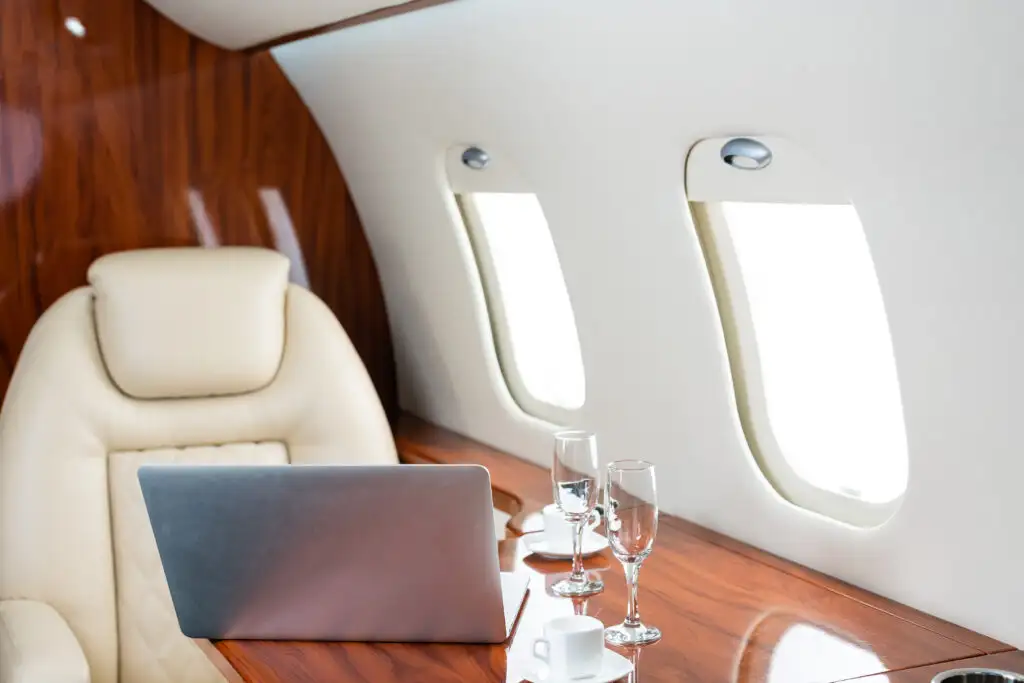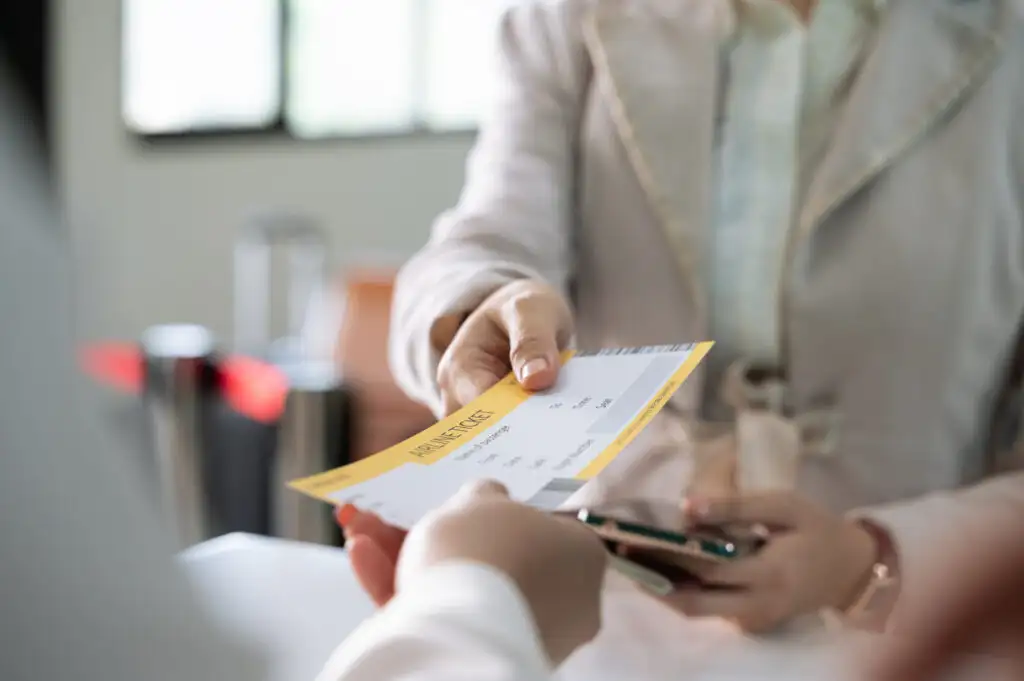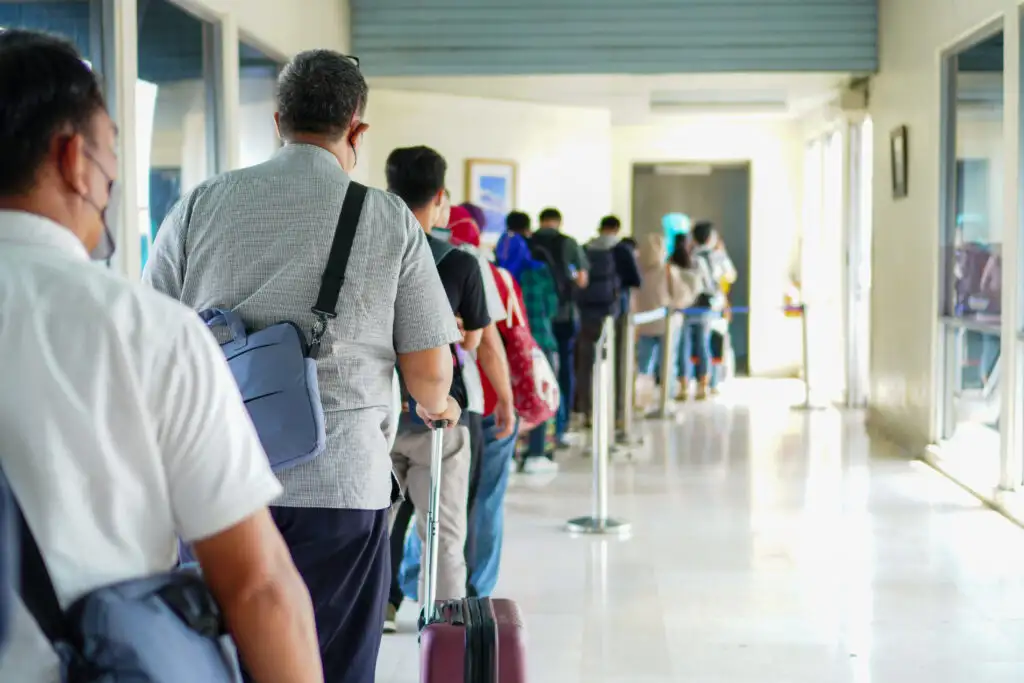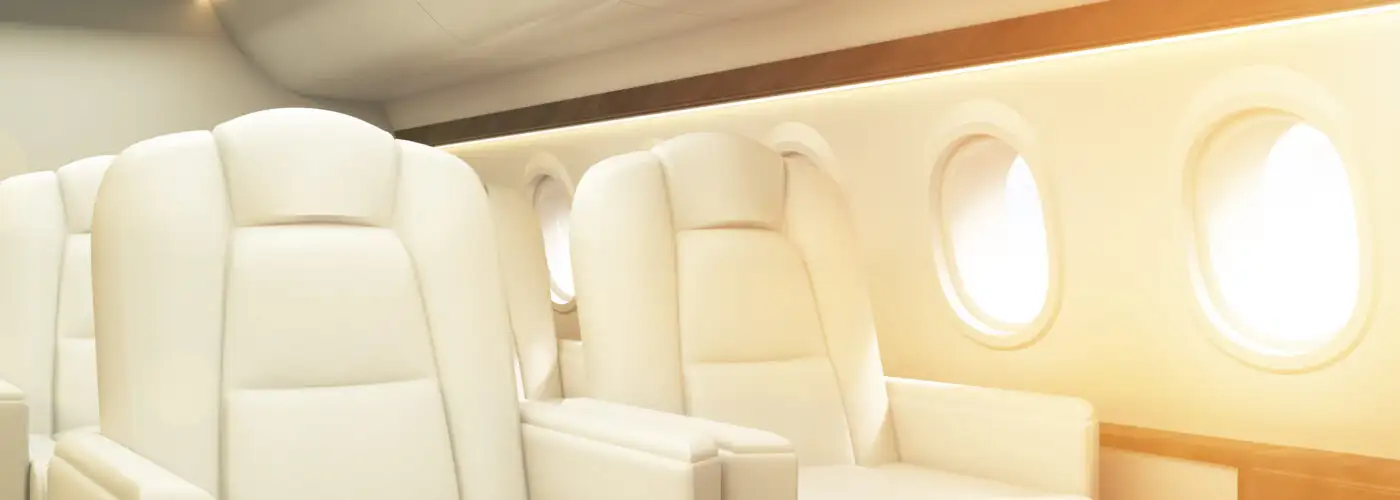Not such a long time ago—and a very good time it was, some say—a “surprise” flight upgrade wasn’t the rare thing it is today. In fact, if you traveled enough, it was just a matter of time before a check-in or gate agent slipped you a boarding pass with a very low row number—a golden ticket of sorts for many travelers.
But these days, when everything flight-related has a price tag, you’ll pay $99 for an “upgrade” to the front section of coach, just for the right to get off the plane more quickly (although in some cases it does also buy you an inch or two of extra legroom). Many factors have created the present “zero upgrade” environment—like the airlines’ love of fees and surcharges, computerized seat assignments (which make it much easier to know where everyone is well before flight time), very full flights, and increased competition for upgrades due to the degraded state of flying coach.
But just because your chances of getting an upgrade have gone down, you don’t necessarily have to give up. To learn how to get upgraded to first class for free, check out the tactics below. But first, let’s realize that, for many domestic flights…

First Class Isn’t What It Used to Be
Don’t get me wrong—when I am filing past the first few rows of seats on my way to the back of the plane, those big leather seats with folks already drinking wine in them have a strong allure. But those seats come with a cost, whether in cash or in miles, and on shorter domestic flights you don’t get all that much more than the folks in coach—wider seats, a little more legroom, free drinks, and the chance to board a little earlier.
That said, some airlines have upped the ante in their first-class cabins on longer domestic routes. American Airlines offers lie-flat seats in first class on some transcontinental routes, while Hawaiian Airlines has lie-flat options on its first-class service to Hawaii. On these types of domestic flights, an upgrade is definitely worth trying for.
The same goes for longer international flights. Much more critically than better food and drinks, first- and business-class seats in most international aircraft convert into beds that are pretty darn comfortable. On a flight back from Tokyo in first class a few years ago, I was actually disappointed when we began our final descent; when is the last time that happened in coach?
Why It’s So Hard to Get a Free Upgrade
David Rowell, who writes The Travel Insider, notes that “it is enormously harder to get upgrades these days than it used to be. Well, correction, it is harder to get undeserved upgrades these days. The procedure for getting upgrades that one is entitled to has become almost 100 percent automatic and hands-off, and with all flights being full in both cabins, there isn’t much ‘wiggle room’ for people to exploit.”
And it is not just a combination of luck and automation that will shut you out of upgrades—at some airlines, it may be a matter of policy. “Most airlines state, in no uncertain terms, that their policies prohibit arbitrary upgrading, both at check-in and onboard,” says Randy Petersen of InsideFlyer. “It’s a firm rule, with no room for negotiation or interpretation.” Petersen agrees about the root cause: “This becomes understandable when you consider that upgrading is now often done electronically, rather than by queuing up at the check-in counter.”
These electronically issued upgrades are doled out by a number of metrics, whether to the highest-ranking elite flyer, or the person who purchased an upgrade-eligible coach fare, or the person who cashed in her miles.
We commonly think of just two to five main classes on airplanes, including first, business, and economy, plus the recent emergence of premium and basic economy. But the fact is that economy class can have numerous sub-classes, as outlined in this Points Guy article—and each of these class levels carries eligibility (or lack thereof) for various amenities, including upgrades. The very lowest levels of economy class will rarely be prompted to upgrade, or even eligible to upgrade.
That said, since stories and rumors of free upgrades persist, here are some tactics to get you into that privileged group that seems to snag upgrades—or at least says they do.
How to Get Upgraded to First Class: 14 Tactics to Try

These tricks and ground rules are worth keeping in mind as you try to land that elusive free upgrade.
Be a seriously loyal customer.
If you fly a lot on the same airline, your options for getting upgrades soar. High-mile/point travelers are the first eligible and first chosen for most upgrades, so despite the fact that airline experts have been bemoaning the devaluing of airline miles for years, if you are a high-mileage and high-dollar flyer, you will see greatly increased upgrade offers, often at no cost.
Get an airline credit card.
Using an airline credit card allows you to rack up miles, including sign-up bonuses, that you can apply toward upgrades.
Dress neatly.
Dressing well is not the ticket to ride some hope it is, but even so, you are not getting an escort to the front of the plane if you are wearing cargo shorts, a tank top, and flip-flops. Most people don’t even want to sit next to you in this case, let alone upgrade you.
Check in online at the earliest possible time.
Online check-in is available beginning 24 hours before your flight, and the early bird has the best chance of nabbing an upgrade—though you’ll usually have to pay for it. As the minutes pass and more travelers check in, some of those folks will be looking and paying for upgrades, and once those seats are gone, they’re gone.
Be on time, and have good timing.
Showing up late to request an upgrade when an agent is just trying to get everyone in the air isn’t going to work. Do agents the courtesy of making your request with plenty of time to spare before the flight, and when no one else is competing for their attention.
Ask politely and directly.
Randy Petersen recommends something as simple as “If you are upgrading passengers on this flight, I would like to be considered.” Inserting the word “please” won’t hurt you either.
Be reasonable.
Being overly demanding or demeaning just inspires agents to pick someone else to upgrade if the opportunity arises. And don’t waste everyone’s time and good will if you know that you are a poor candidate. If you are traveling with your whole family, have a pet lobster in a cage as your carry-on, or purchased a ticket for an extremely low fare, you probably don’t want to spend your energy demanding upgrades.
If the flight is relatively empty, your chances are slim.
Even though seats in business class may also be empty, the airlines don’t usually upgrade people for no reason. If the flight is full, your chances are better. Airlines carefully plan how much they oversell flights, and their inventory departments are not upset if people need to be upgraded to accommodate everybody on the flight. Therefore, on a full flight the airlines sometimes are forced to upgrade people. In this scenario, if you have a good story, you may be lucky—solo travelers who are willing to be reseated to accomodate families have the best odds. Remember, of course, that business or first class may already be full from prebooked elite-level upgrades.
Volunteer to give up your seat if the flight is oversold.

Whenever airlines overbook flights and need folks to give up a seat, that is when you have the most leverage for getting concessions and upgrades from the airline. Most of us have been in airports listening to increasingly urgent announcements looking for volunteers to give up their seats; in that situation, you can go up to the gate, set your conditions and then let the airline decide if it can meet those conditions.
You might say, “I can volunteer to give up my seat for X hundred dollars in flight credit or an upgrade on my replacement flight, as long as I still get there by Y o’clock.” This may not work on the first round of volunteer requests, but when the gate agents come up on departure time and still need empty seats, they can often deliver quite a bit.
If you have been inconvenienced by the airline, don’t hesitate to ask for an upgrade.
Again, airlines don’t generally upgrade people for no reason, but if they have caused you a problem, that may be reason enough.
If your itinerary is botched or implodes for some reason, particularly if it affects only you and no one else (such that the airline is not trying to accommodate lots of folks in the same situation), your case for an upgrade on a subsequent flight becomes more compelling. The airline is not obligated to upgrade you, but if this happens, pleasantly but firmly let the gate agents know that if an upgraded seat is available on your rebooked flight, you would greatly appreciate getting that seat.
If you have been extremely inconvenienced—maybe you were sent back to your hotel a couple of times, or you slept on the airport floor all night—let the gate folks know, as they may have some sympathy for you.
Ask your travel agent.
My travel agent has a relationship with certain airlines that lets her book her customers into preferred seats that are not released to everyone (usually toward the front of the plane, in exit rows and the like). She can also see upgrade availability fairly quickly, and many agents can add comments to your reservation that increase your chances of being chosen for an upgrade. Ask about these the next time you talk to your travel agent.
Watch for business-class sales.
Most leisure travelers ignore advertised business-class fare sales entirely. I have occasionally seen transatlantic business-class sale fares for around $1,100 at a time when it costs that much to fly coach. This will take some persistence and sleuthing, but you can sometimes fly in the front of the plane for less than the folks crammed into the back of the plane.
Look for two-for-one sales.
If you are traveling with family or a companion, a two-for-one sale on first- or business-class fares could cut the cost of upgrading, well, in two. At current coach prices, these could result in a wash with respect to price, if certainly not with respect to pleasure.
Buy an extra seat.
One interesting tactic to find yourself some breathing room offered by Petersen might appeal to folks traveling on very cheap sale fares: buy two coach tickets. Say you find one of these $100 roundtrip fares to Florida or the like; the airlines that offer these usually make up the difference in fees for checked bags, movies, food, and other extras. However, if you don’t need headphones or to check a second bag, you can skip all those charges, and get yourself a heap of legroom for $50—less than the cost of most premium seats.
If you use this tactic, it will be important for you to check in your second seat, as well as present the boarding pass at the gate—otherwise, your seat could be given to a standby passenger.
In all honesty, your chance of falling into one of these free upgrades is slimmer all the time—even Rowell has stopped trying entirely. That doesn’t mean you have to; if you have had a recent experience with surprise or unpaid upgrades, let us know in the comments below.
Book Your Stay With SmarterTravel Hotels
No matter where you’re flying, find your hotel for a great rate with SmarterTravel Hotels.
Editor’s note: This story was originally published in 2017. It has been updated to reflect the most current information.
You Might Also Like:
• Airport Security Frequently Asked Questions• 8 Tips from a Flight Attendant’s Daughter to Save Money on Your Next Flight
• 6 Savings Secrets for Senior Travel
• The Best and Worst US Airlines for Lost Luggage
• How to Cope with Lost Luggage on Vacation
We hand-pick everything we recommend and select items through testing and reviews. Some products are sent to us free of charge with no incentive to offer a favorable review. We offer our unbiased opinions and do not accept compensation to review products. All items are in stock and prices are accurate at the time of publication. If you buy something through our links, we may earn a commission.
Related
Top Fares From
Today's Top Travel Deals
Brought to you by ShermansTravel
France: 8-Night Paris, Avignon & Nice...
Infinity Worldwide Vacations
 vacation
$2880+
vacation
$2880+
Poconos: 3 Nts in Garden of...
ResortsAndLodges.com
 hotel
$305+
hotel
$305+
7-Nt Canada & New England Cruise,...
Princess Cruises
 cruise
$839+
cruise
$839+





